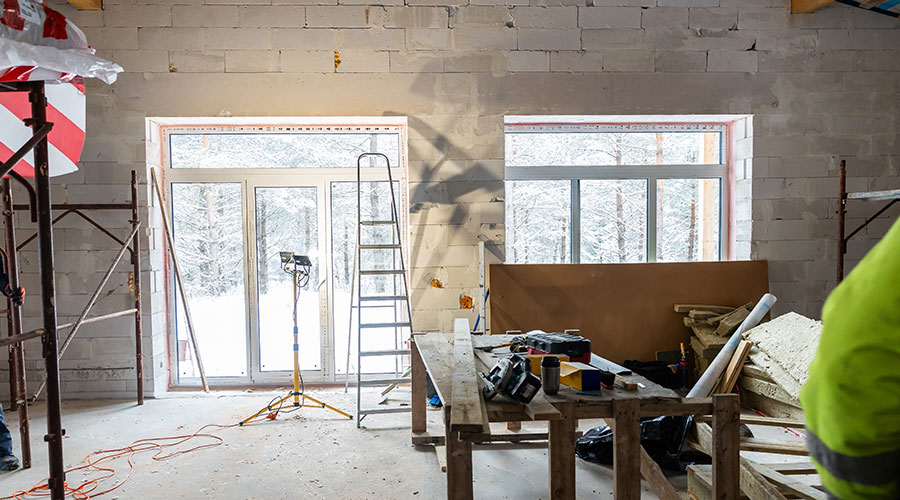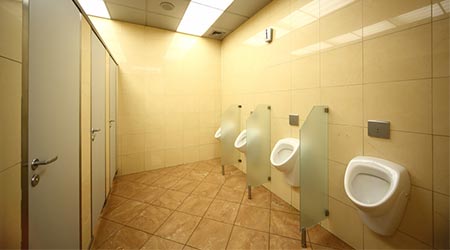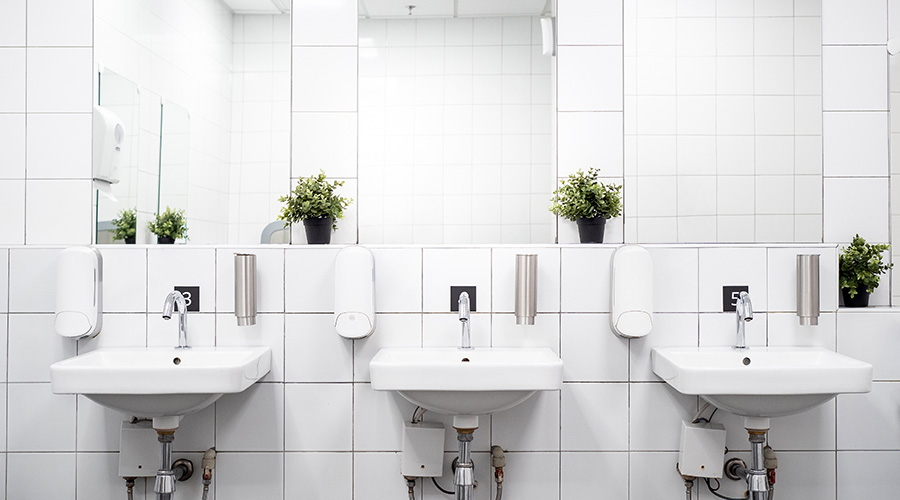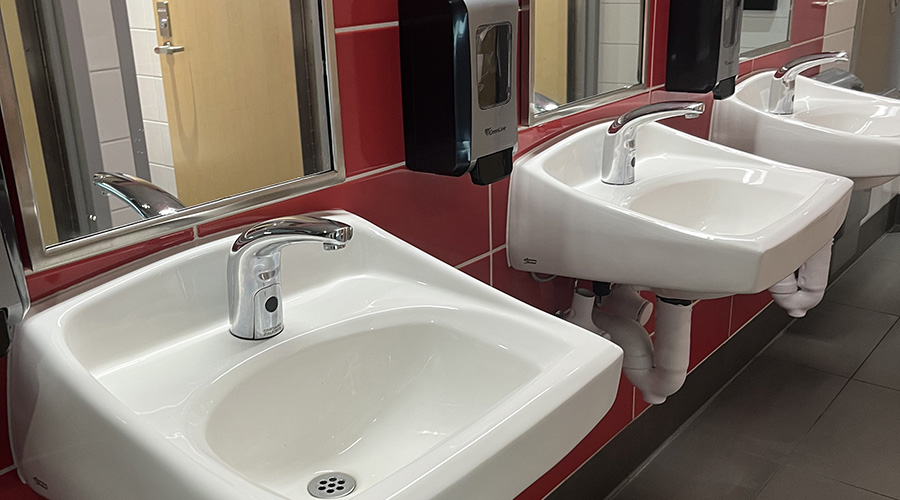Housekeeping Procedures Help Keep Plumbing Costs Down
Part two of a two-part article on plumbing upgrades
Upgrades to restrooms and plumbing systems also can deliver benefits based on product advances and resulting modifications to housekeeping procedures.
New-generation electronic, hands-free toilet flush valves create a more hygienic environment in restrooms and give users a positive impression of the space. Battery-operated sink valves also can ensure more hygienic restrooms that are free from cross-contamination. These valves incorporate motion sensors that turn on the water when hands pass under the spigot. Today’s electronic valves feature lithium-ion batteries that can operate for thousands of on-off cycles for more than a year between changes, and they send a signal when nearing the end of battery life.
Hands-free, automatic, sleeve-like toilet seat covers also can be incorporated into upgrades and deliver hygiene benefits. The product features a roll of several hundred covers that sits on the back of the toilet seat and automatically inserts a new cover after each use.
The sleeve will not slip off the seat, ensuring hygienic use of the toilet. Used covers are returned to the housing and destroyed to avoid reuse. Replacing an existing with one using this new cover housing takes about the same amount of time as replacing a conventional seat.
Advances in the products incorporated into upgrades can have a direct impact on housekeeping procedures.
Restroom housekeeping programs should include not only effective cleaning but also hygienic cleaning, as well as testing to determine progress of the program. Many new labor-saving tools and equipment can improve cleaning processes while reducing labor time and cost. Managers can invest the savings in more thorough methods that result in a still-higher higher level of cleanliness and greater user satisfaction, and additional value to the facility.
More effective procedures can mean improved hygiene. Every time a user flushes a toilet or urinal, the process ejects waste into the air in the form of a mist that coats fixtures, walls and floors. Traditional string mop and flat cleaning for floors — as well as rags and sponges for fixtures, doors, and walls — tend to simply move microbes around rather than removing them effectively.
New, much faster cleaning and sanitizing techniques enable cleaners to use one machine for wet/dry vacuuming, carpet extraction, carpet vacuuming, upholstery spot removing, pressure washing, flood recovery, auto-scrubbing, and grout cleaning. It incorporates hands-free pressure washing by using chemical cleaners that are automatically diluted to the proper strength.
This eliminates guesswork and overuse of expensive concentrated cleaning solutions. The same machine follows the cleaning process with vacuum removal of the soiled water, leaving floors dry, sanitized, and ready for use in about one-third of the time required for wet mopping.
The true test of a plumbing upgrade, aside from water conservation, is whether it enables cleaners to work more effectively. How do managers know if updated methods are effective? One measurement method is to use a hand-held, digital, adenosine triphosphate (ATP) meter. Cleaners can test surfaces by swiping a sampling swab across the surface and inserting it into the meter. A digital readout displays the results and enables the user to determine the effectiveness of the cleaning method in minutes.
The meter tests for ATP, a chemical whose concentration shows the level of microbial contamination remaining on surfaces after cleaning.
This testing enables cleaners to establish a base period, set improvement goals, and measure the results of improvement actions, such as upgrading fixtures and cleaning methods and equipment. This approach provides a tangible way to implement a cleaning policy and establish processes, controls and goals for the program.
Thomas A. Westerkamp is a maintenance and engineering management consultant and president of the work management division of Westerkamp Group LLC, www.westerkampgroup.com.
Related Topics:














